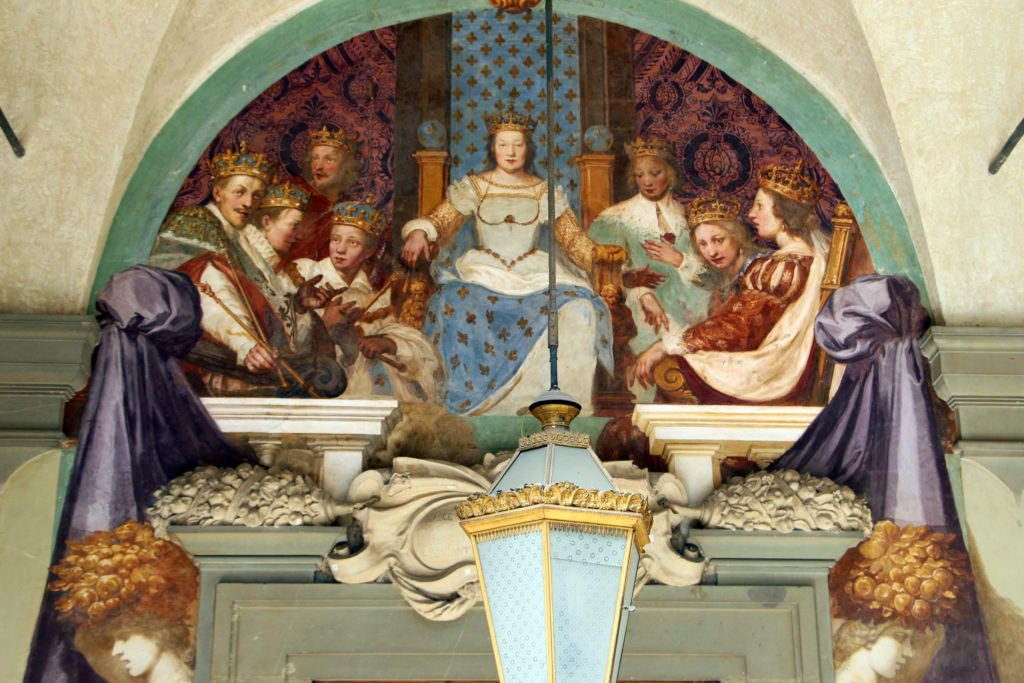
Caterina de ‘Medici, Queen of France, Florentine by birth, great innovator

Caterina de’Medici is known as Queen of France, a Medici at the court of Paris who has always been considered a provincial but who has radically changed the cuisine and customs of an entire nation!
Thanks to this young Florentine woman, the culinary culture, of Italian origin, has changed and innovated French cuisine.
Caterina and her childhood between Italy and France
Caterina was born in Florence and became an orphan when she was very young.
The young woman soon became a pawn on the great European political chessboard when at the age of 14 she married the second son of the king of France.
Caterina was immediately directed to the study of French in which it seems she was fluent but with a strong Italian accent. Most of her life was spent in France but her family and homeland were decisive.
Catherine, queen mother
Unexpectedly, Caterina’s husband becomes King after a few years with the name of Henry II and consequently Caterina becomes Queen.
At that point the young woman is considered too simple for a king.
Caterina, despite her great culture, for the French, was only the daughter of a wealthy banker family from a small Italian town.
Caterina managed, not with little difficulty, in gaining respect and with many sacrifices, to become the mother of three French Kings.
History leaves us a vision of Caterina as a woman clouded by jealousy, vindictive and austere, while a more modern reading tells us of a sovereign, who certainly with many difficulties, but tried to support her French family and civil tolerance and also changed some uses and customs of an entire Nation.
Caterina and the innovation in French customs and traditions
Although Caterina is known as the Queen mother of France, she is a Medici woman and as such she does not give up her greatest passions that she brings with her to France.
Before Catherine, at the French court, people still ate with their hands, with great elegance but still with their hands. Caterina introduces the fork and brocade tablecloths.
Caterina, like many men of the Medici family, loved to hunt and often she went to the family estates with her father-in-law, the King.
We often read that it was Caterina who cleared the ride side saddle for women!
Caterina, therefore, an innovator both at the table and on horseback!
Caterina and innovation in French cuisine
The competition between French and Italian cuisine is ancient but always current.
However, history teaches us that it was an Italian woman, Caterina who determined the success of some recipes known today as French.
It seems that Caterina was very greedy and when she moved to France, in addition to a substantial dowry, she brought Italian chefs with her.
· onion soup, a poor but very delicious recipe, was introduced to the court by Caterina and became the soupe á l’oignon.
· canard à l’orange was initially the orange-apple duck. Recipe loved by Caterina and in Florence for the unusual fruit-meat combination. Today the recipe is more simply known as orange duck.
Caterina’s innovation at Villa Campestri
Where can we find Caterina’s legacy today? In many Italian traditional dishes for which also the cibreo and the béchamel (called glue sauce).
If you want to come and taste the ancient version of international dishes, we are waiting for you at Villa Campestri in Mugello, where the Medici family originated!
Quick Booking snippet
Tuscany, an Italian region renowned for its cultural and historical wealth, is home to numerous UNESCO World Heritage Sites. These sites represent not just the architectural and artistic beauty of the region but also its significant historical heritage.
Italian cuisine, celebrated globally, is a mosaic of flavors and traditions. From the rolling hills of Tuscany to the bustling streets of Naples, each region contributes its unique essence to what we recognize as Italian cuisine. This culinary journey explores how history, culture, and regional diversity have shaped the renowned gastronomy of Italy.
Tuscany is world-renowned for its rich winemaking tradition, a heritage rooted in centuries of history and culture. In this detailed guide, which is like a true oenological journey, we will discover not only the fine wines of the region but also the traditions and landscapes that make Tuscany an unmissable destination for wine lovers.
In the heart of Italy, Tuscany stands out as one of the most emblematic regions for wine production. Famous for its landscape of gentle hills, cypress trees, and picturesque villages, this region is also a paradise for wine lovers. Tuscan vineyards, nourished by fertile soil and an ideal climate, produce wines that are appreciated worldwide […]
For those looking for a firsthand experience, the Agricultural Tourism Company Badia di Susinana offers horseback rides and trekking and riding courses with a guide, in addition to hospitality for horses and riders, located in Palazzuolo sul Senio. Alternatively, the Farm I Cavalli del Vento allows crossing beech forests and vast chestnut groves, with rides […]
Sport fishing in Tuscany offers a wide range of opportunities due to the abundance of inland and coastal waters in the region. Specifically, the province of Pistoia, with Lake Nievole in Serravalle Pistoiese, is renowned for trout fishing and other fish such as carp, grass carp, tench, and sturgeon, with a catch and release rule. […]
In Val di Chiana, to savor an authentic Chianina steak, there are several renowned restaurant options: 1. Ristorante Casa Cecco: Offers the chance to taste a Chianina steak in a farmhouse dating back to 1600. 2. Agriturismo di Trequanda: Here, Chianina meat, raised in local pastures and processed by the company’s trusted butcher shop, becomes […]
The Italian Quattrocento was a period of extraordinary artistic effervescence that produced numerous world-renowned artists. Among them, some of the most influential were: 1. Andrea Mantegna (1431–1506): A painter and engraver from Padua, famous for his frescoes in the Camera degli Sposi in Mantua.
